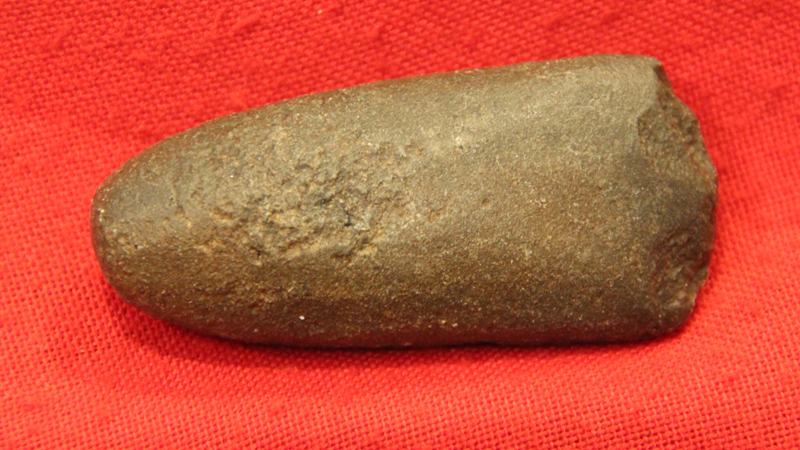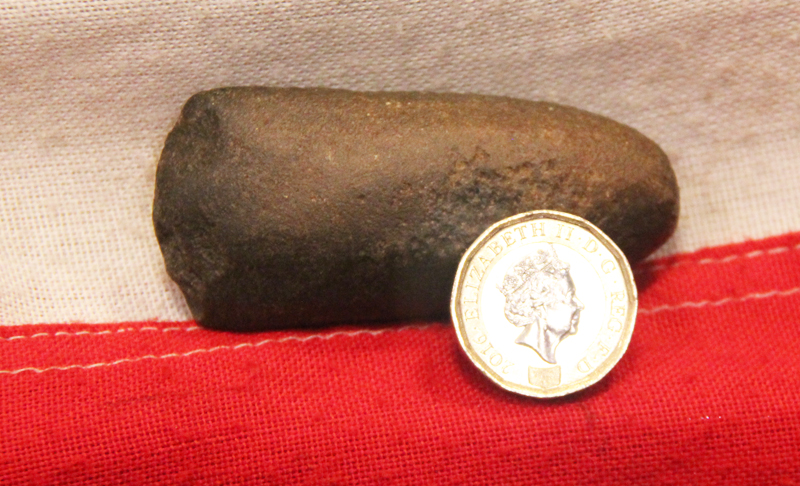Around 6000 Year Old, A Fabulous Neolithic Period Stone-Age Polished Hand Axe. A truly Beautiful Example That Is Amazingly Tactile
Some of the most fascinating, interesting and intriguing hand made tools and weapons come from a time so far distant to us, it was thousands of years before history was ever recorded, yet they can be extraordinarily affordable. So beautiful and tactile, in fact as much an object d’art as an implement.
To hold within ones hands an implement that was last used by a person up to 4000 years before Julius Caesar even set foot upon this land with his cohorts of Roman Legionaries is simply awe inspiring. It is extraordinary that we have a remarkable knowledge about how they lived, farmed and thrived upon the earth, but not the remotest clue about how they spoke, what form of language they used, and even remotely how it might have sounded. Yet here one can be, holding a piece of amazing hand crafted Neolithica, a tool and vital artefact of person who had hopes, dreams, desires, fears, wants and needs just as we do, but not having the faintest clue how they thought, or communicated them, or even expressed them vocally to others. Ironically from a period around 4600 before the era known to the British as the Dark Ages, due to so precious little is known about British history between when the Roman’s left our shores and the Anglo Saxons ruled this land.
Mankind has effectively long past created a time machine, it is, simply, language, but only when combined with the ability to set it down, to be visually communicated from one to another, albeit on rock or stone, slate tablets, scrolls, parchment vellum or paper. That way once it can be understood, translated if you like, can we communicate with the past by knowing what they had recorded about their time. This is why the printed word, and not electronic data, is so absolutely vital to the continuation of humanity. Imagine, just, say 50 years into the future, it is possible that by then all recorded information around the world will be by electronic data alone, then imagine the simplest possibility of all electronic data being lost or inaccessible, by say an electro magnetic pulse. If that occurred 200 years in the future, without those 150 years being saved in print, we would have a new Dark Age, simply by not having any form of a hand held viewable and readable record.
Around 4,000-2,500BC, In the later Neolithic period, (known as the later stone age) people started to settle down and start farming. At places such as Springfield Lyons, these early settlements have been identified. It was also at this time when stone tools, which up until this point had been purely functional, started to take on a more symbolic meaning. Polished stone axes and other tools that were never used have been found across the county, showing changes in social hierarchy and possibly even the development of religion. The Neolithic also known as the "New Stone Age", the final division of the Stone Age, began about 12,000 years ago when the first development of farming appeared in the Epipalaeolithic Near East, and later in other parts of the world. The division lasted until the transitional period of the Chalcolithic from about 6,500 years ago (4500 BC), marked by the development of metallurgy, leading up to the Bronze Age and Iron Age. In Northern Europe, the Neolithic lasted until about 1700 BC, while in China it extended until 1200 BC. Other parts of the world (the New World) remained in the Neolithic stage of development until European contact.
The Neolithic comprises a progression of behavioral and cultural characteristics and changes, including the use of wild and domestic crops and of domesticated animals.
The term Neolithic derives from the Greek neos and lithos "New Stone Age". The term was coined by Sir John Lubbock in 1865 as a refinement of the three-age system2.5 inches long As with all our items it comes complete with our certificate of authenticity.
Code: 22388
295.00 GBP






